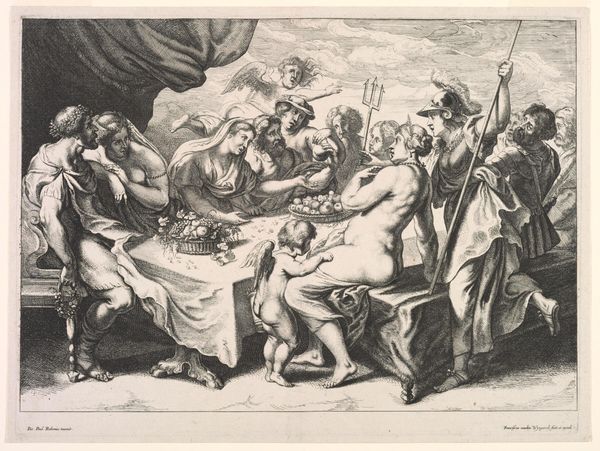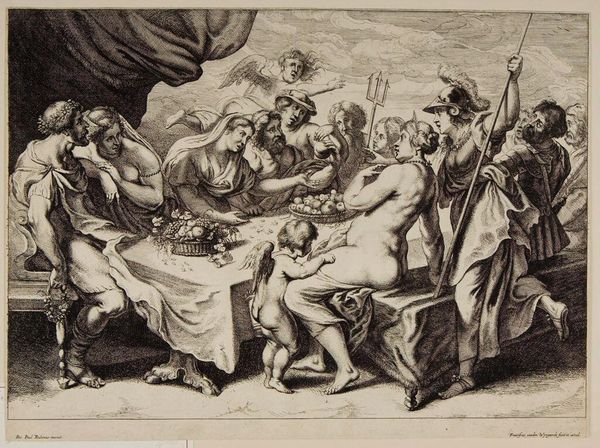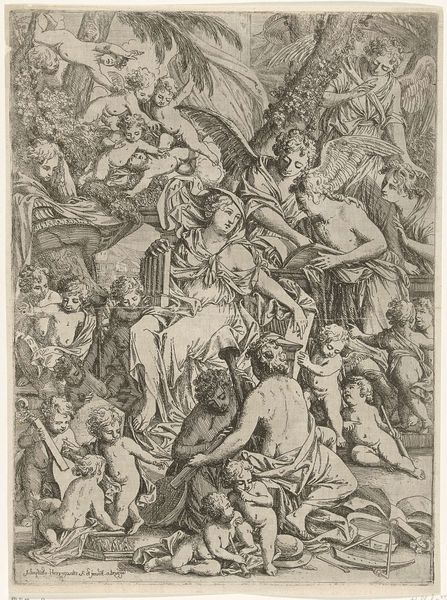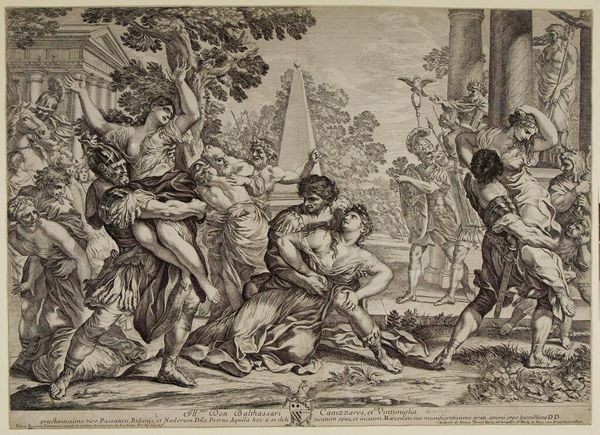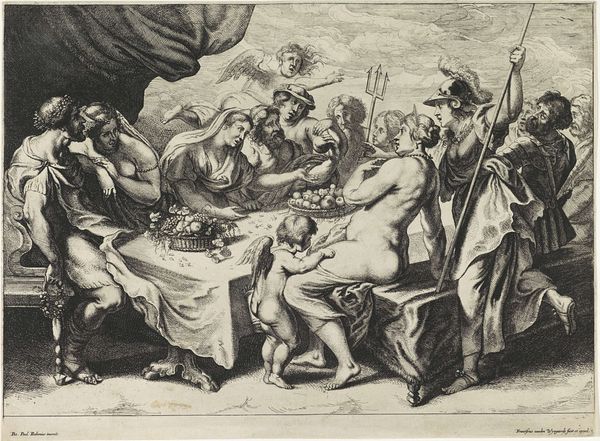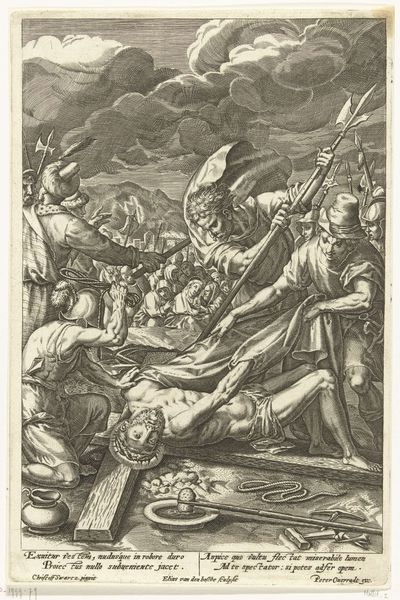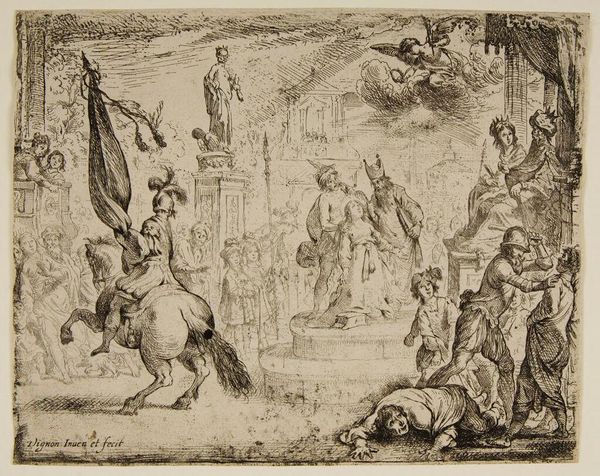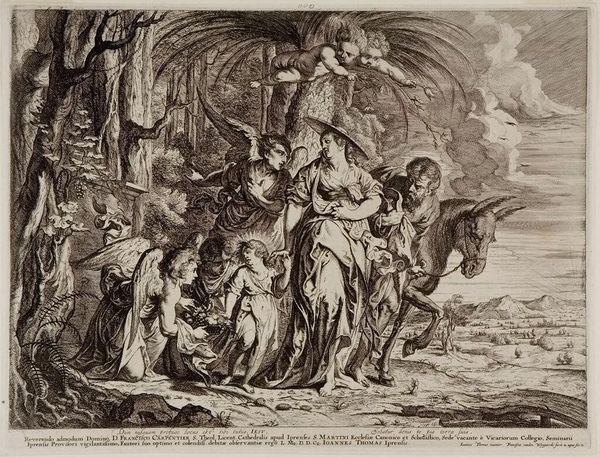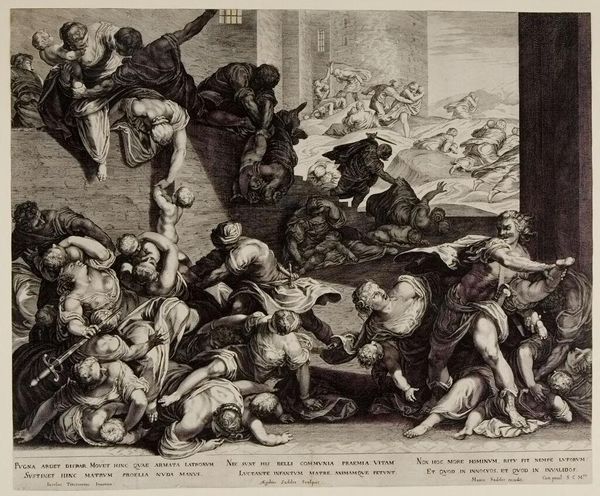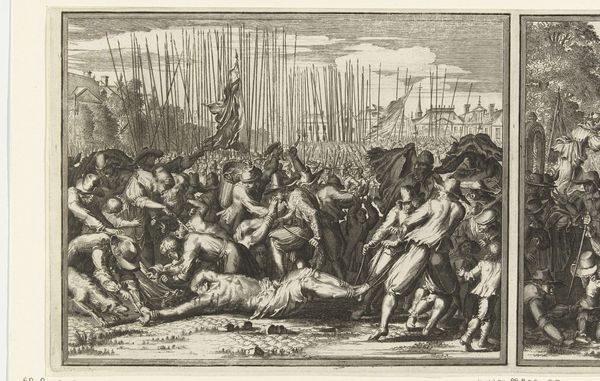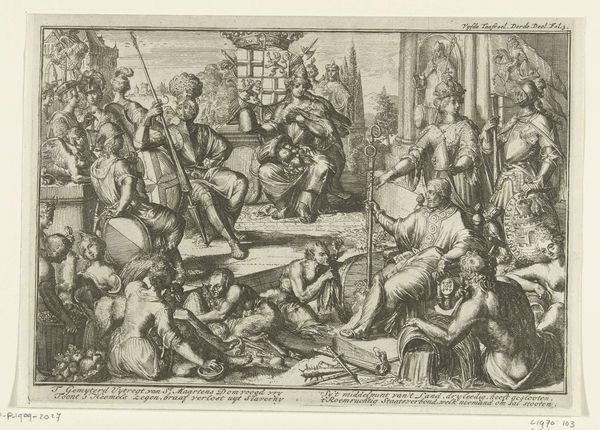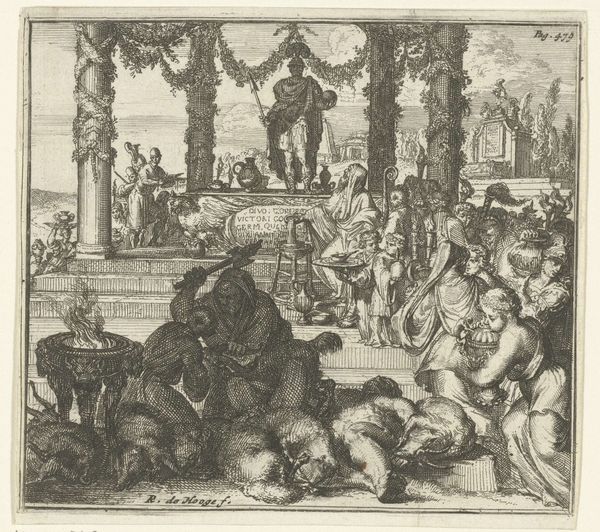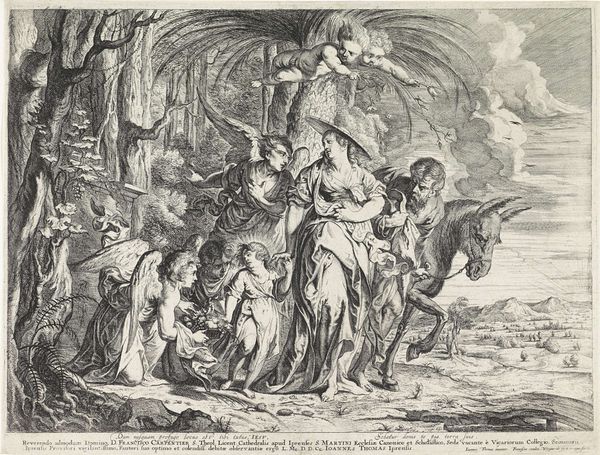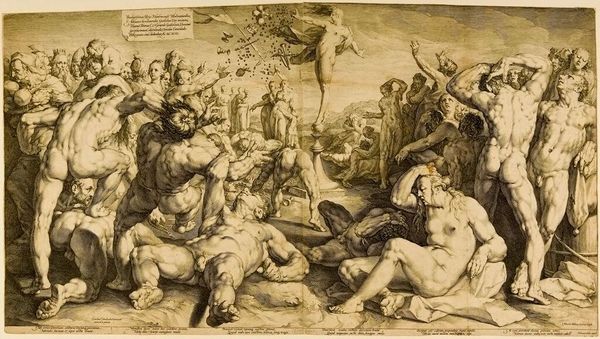
print, engraving
#
portrait
#
narrative-art
#
baroque
# print
#
figuration
#
history-painting
#
engraving
Dimensions: height 155 mm, width 248 mm
Copyright: Rijks Museum: Open Domain
This etching, made in the Netherlands in 1672 by an anonymous artist, depicts the gruesome murder of the brothers De Witt. At the top we see oval portraits of the brothers; below, a chaotic scene of their assassination. The image encapsulates the political turmoil of the Dutch Republic during the Rampjaar, or "disaster year," when the country was at war with multiple European powers. Johan de Witt, the Grand Pensionary, and his brother Cornelis, were blamed for the military setbacks. Popular anger, fueled by Orangist propaganda, led to their brutal lynching by a mob in The Hague. The image shows their bodies hanging upside down after their murder. This print is a stark reminder of the fragility of political power and the dangers of mob rule. To fully understand the print, it's useful to consult historical documents, political pamphlets, and even contemporary ballads. Only through that research can the contingent and contested meanings of this dramatic image be more fully understood.
Comments
No comments
Be the first to comment and join the conversation on the ultimate creative platform.
